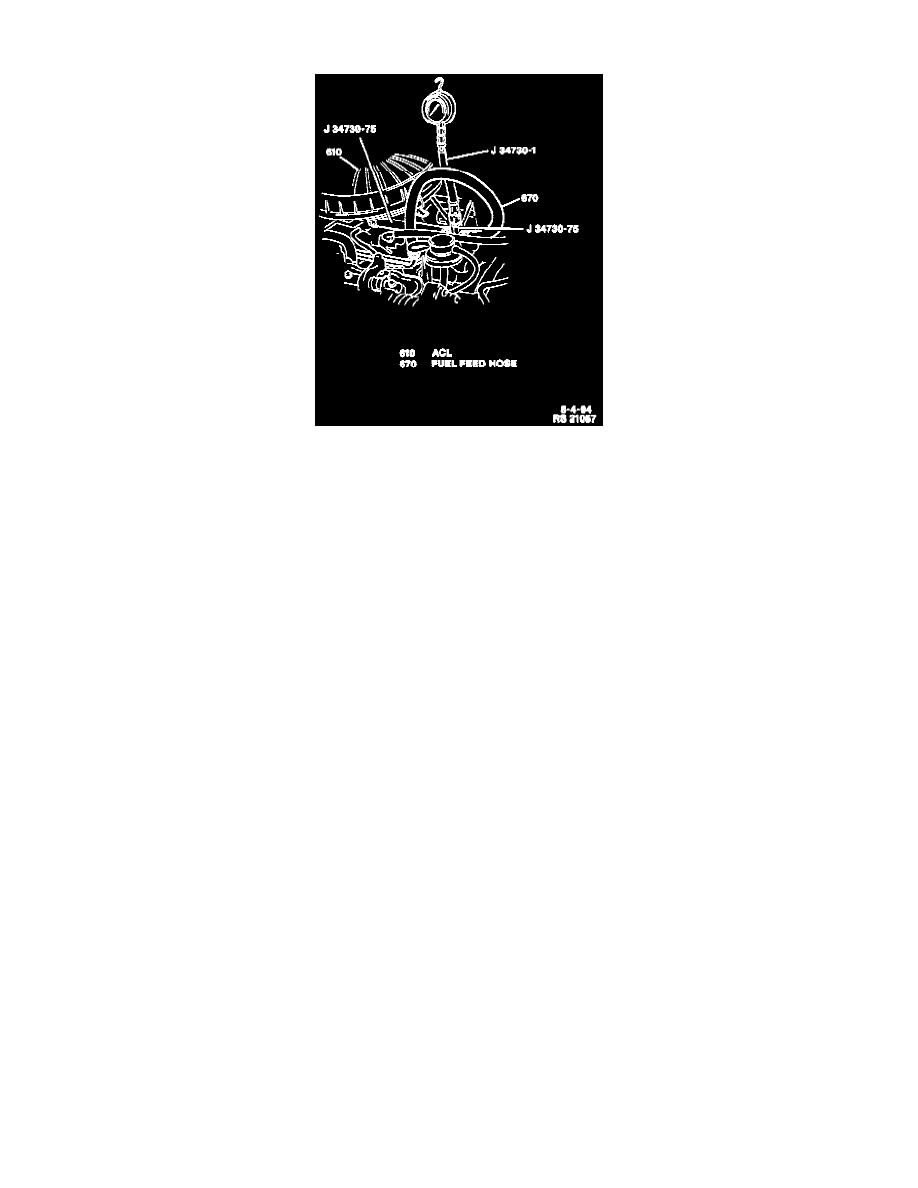Metro L4-079 1.3L VIN 9 TBI (1995)

Fuel Pressure: Testing and Inspection
Fuel Pressure Gauge Installation
TOOLS REQUIRED
J 34730-1 Fuel Pressure Gage
J 34730-75 Fuel Rail Adapter
FUEL SYSTEM PRESSURE TEST
A fuel system pressure test is a part of several diagnostic charts and symptoms checks. To perform this test, follow this procedure:
1. Relieve fuel pressure. Refer to Fuel System Pressure Relief Procedure under this heading. See: Powertrain Management/Fuel Delivery and Air
Induction/Testing and Inspection/Component Tests and General Diagnostics/Fuel System Pressure Relief Procedure
2. Remove one nut, one bolt, PCV hose, Intake Air Temperature (IAT) sensor connector and Air Cleaner (ACL) from Throttle Body Fuel Injection
(TBI) unit.
3. Disconnect one clamp and fuel feed hose from throttle body.
4. Install a J 34730-1 and a 1 34730-75 between fuel feed hose and throttle body. Clamp securely to ensure that no leaks occur.
5. Reconnect negative (-) battery cable. Tighten Negative (-) battery cable-to-negative (-) battery terminal retainer to 15 Nm (11 lb. ft.).
6. Start engine and idle at normal operating temperature.
7. Check fuel pressure as follows:
^
Idling: 90-140 kPa (13-20 psi).
^
Engine not running, ignition switch in the "ON," position: 160-210 kPa (23-30 psi).
^
Within one minute with engine not running, ignition switch in the "ON," position: pressure should hold at about 90 kPa (13 psi).
If pressure is not within specification, refer to the On-Board Diagnostic System Check. See: Powertrain Management/Computers and Control
Systems/Testing and Inspection
8. Relieve fuel pressure according to the procedure earlier in this section.
9. Disconnect fuel pressure gage assembly from TBI unit.
10. Connect fuel feed hose to throttle body; secure with one clamp.
11. PCV hose, IAT sensor connector and ACL to TBI unit; secure with one bolt and nut. Tighten ACL bolt to 15 Nm (11 lb. ft.).
12. Reconnect negative (-) battery cable. Tighten Negative (-) battery cable-to-negative (-) battery terminal retainer to 15 Nm (11 lb. ft.).
13. Start engine and check for fuel leaks.
